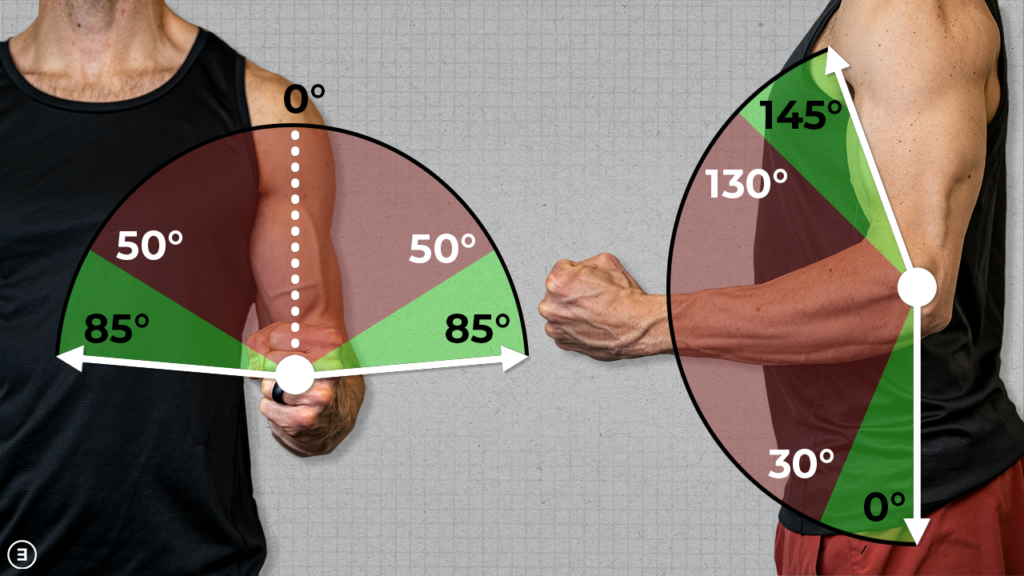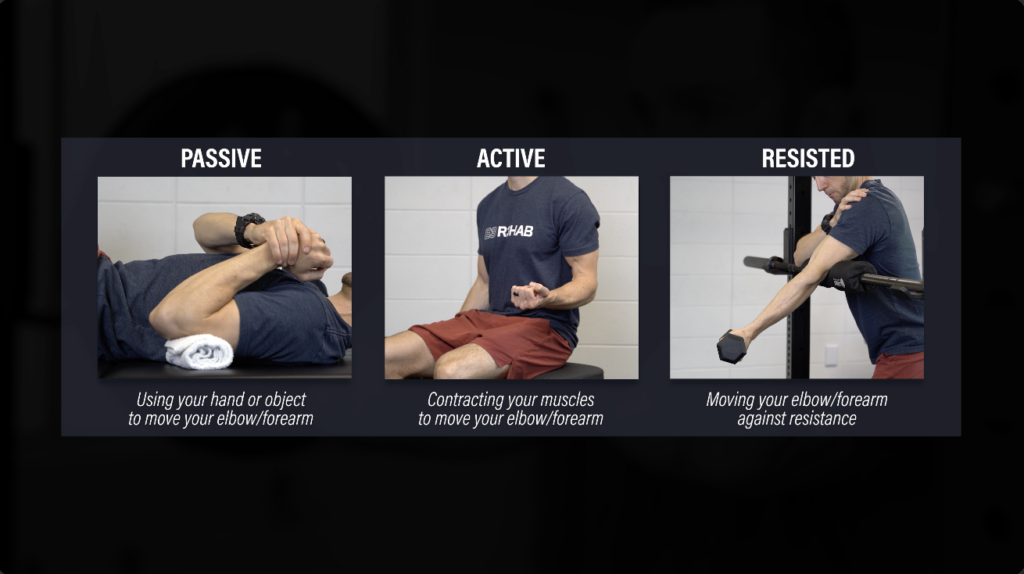The purpose of this blog is to discuss how to assess and improve elbow range of motion after an injury or surgery.
Looking for rehab or performance programs? Check out our store here!
Overview
Your elbow & forearm have four primary motions:
- Extension – Straightening the elbow.
- Flexion – Bending the elbow.
- Supination – Rotating palm up.
- Pronation – Rotating palm down.
Following an injury or surgery to or around the elbow joint, you will want to focus on improving these four movements.
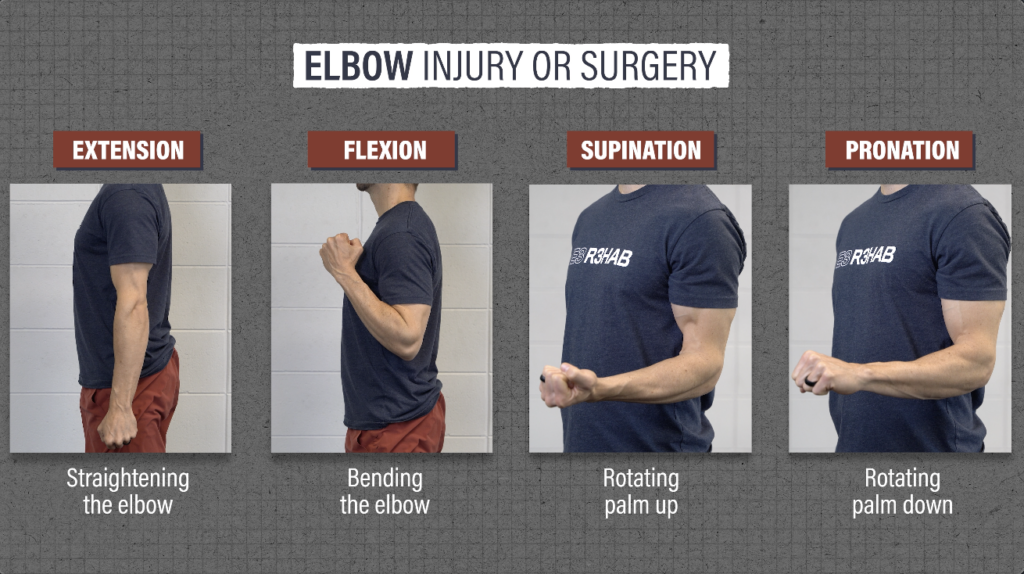
Self-assessment
It is recommended you get assessed by a licensed healthcare provider. However, there are some simple strategies for measuring your own elbow range of motion at home to document progress.
For flexion and extension, take a picture or video of yourself from the side while standing.
- Flexion – Bend your elbow as far as you can comfortably, and if needed, apply gentle overpressure at your end range.
- Extension – Straighten your elbow as far as possible without moving your shoulder.
Measure the angle formed between the middle of your shoulder and your wrist for each motion.
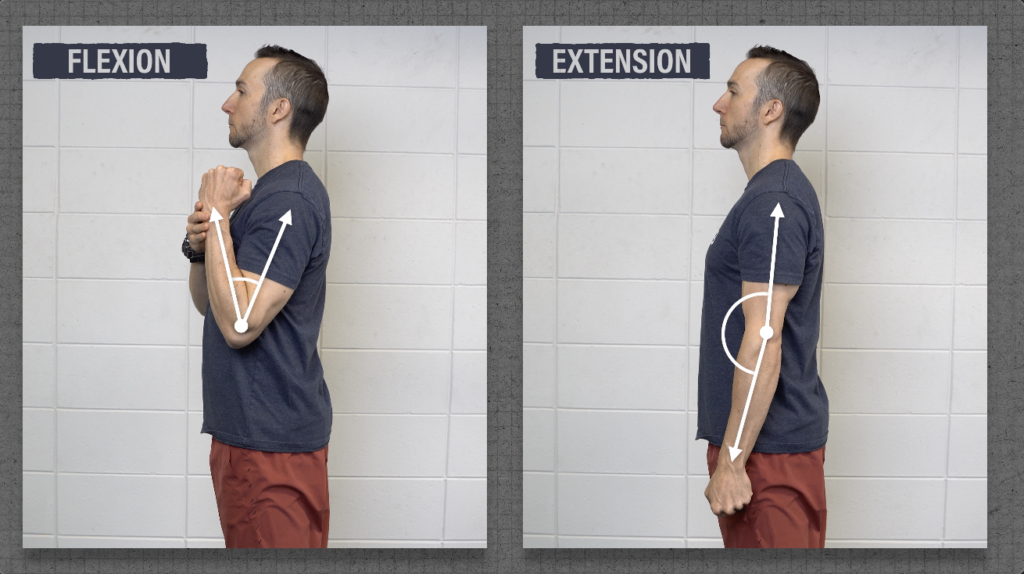
For supination and pronation, take a picture or video of yourself standing from a front view with your elbow bent to 90° and your thumb pointing up. To make the measurement easier, hold a pen or pencil in your hand.
- Supination – Rotate outward so your palm is facing up.
- Pronation – Rotate inward so your palm is facing down.
Measure the angle formed between the middle of your shoulder and a line parallel to the pen or pencil.

How Much Range of Motion Do You Need?
Expected range of motion is approximately:
- Extension – 0°, although some may possess more, such as 5° of hyperextension.
- Flexion – 140-150°.
- Supination and Pronation – 80-90°.
Using your other elbow as a reference point, your goal should be to restore full elbow range of motion following an injury or surgery.

However, there are 3 things to consider:
- If you’ve had surgery on both sides or your other elbow is not a good reference due to a prior injury, then you can work toward the numbers listed above.
- These are average values. Depending on your injury, surgery, history, etc., you may end up with less or more motion.
- Most daily tasks only require a limited amount of elbow and forearm range of motion. For example, several common activities only use about 30 to 130° of elbow flexion, and 50° of supination and pronation (Sardelli et al. 2011). Therefore, even if you are unable to restore full motion, you might only notice minimal functional restrictions on a day-to-day basis.
The range of motion you need will ultimately depend on your goals. If you only need to complete office or household tasks, you may not notice a subtle loss of end ranges. However, if your goal is to compete in weightlifting for example, you will likely need to restore full range of motion or very close to it.
Exercise Categories
In general, exercises can be placed into three categories:
- Passive – Using your other hand or object to move your elbow or forearm.
- Active – Contracting your muscles to move your elbow or forearm.
- Resisted – Moving your elbow or forearm against resistance.
When you can perform each category and how fast you progress will depend on various factors.
For example, if you had surgery to repair a torn biceps tendon, you will likely start with passive exercises within a given range of motion in order to protect the healing tissue, and then over the course of weeks, progress to active and resisted exercises.
On the other hand, if you experience elbow stiffness from a chronic injury, you may perform any or all these exercises right away.
Disclaimer: Exercise selection is widely variable case to case. So before beginning any of the exercises, you should first get clearance from your surgeon, medical doctor or healthcare provider.
Extension Exercises
Passive Elbow Extension with a Dowel – Lie on your back, with your elbow at your side and a towel under your arm. Holding a stick or dowel, use your non involved side to gently push the elbow into more extension. Hold your end position for 2-3 seconds. Use as much assistance from the uninvolved side as needed. Perform 2-3 sets of 15-20 repetitions, 2-3x/day, every day.

Low Load Long Duration – Either sitting or lying down, simply let gravity help straighten your elbow. If extension is improving and you need to intensify the stretch, add a weight onto your wrist or forearm. Perform for 10-15 minutes, 2-3x/day, every day.
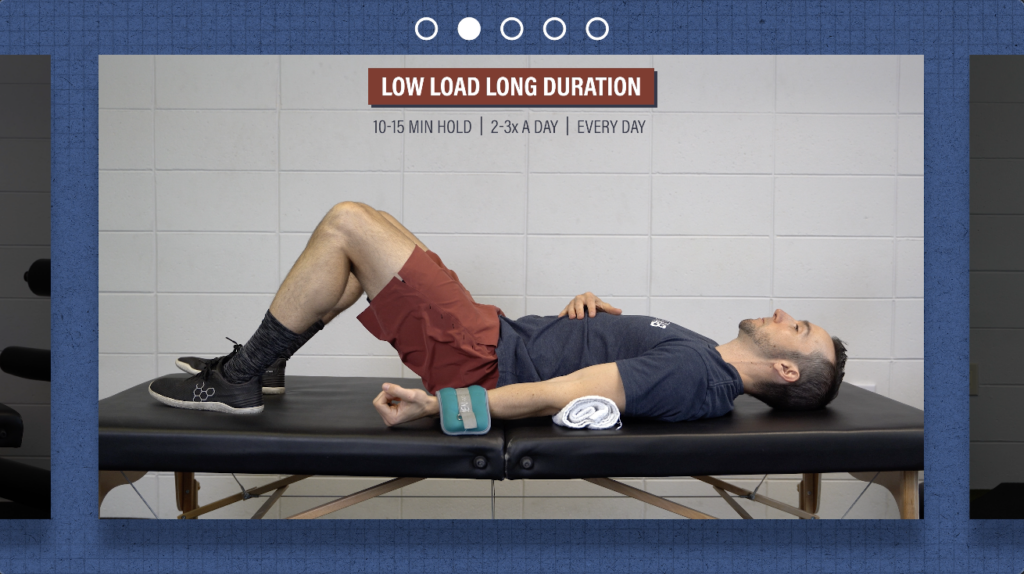
Active Elbow Extension – Actively move your elbow through your full range of motion, placing an emphasis on trying to straighten the arm as far as you can. You can do this standing, sitting, or lying down. Perform for 15-20 repetitions, 2-3x/day, every day.
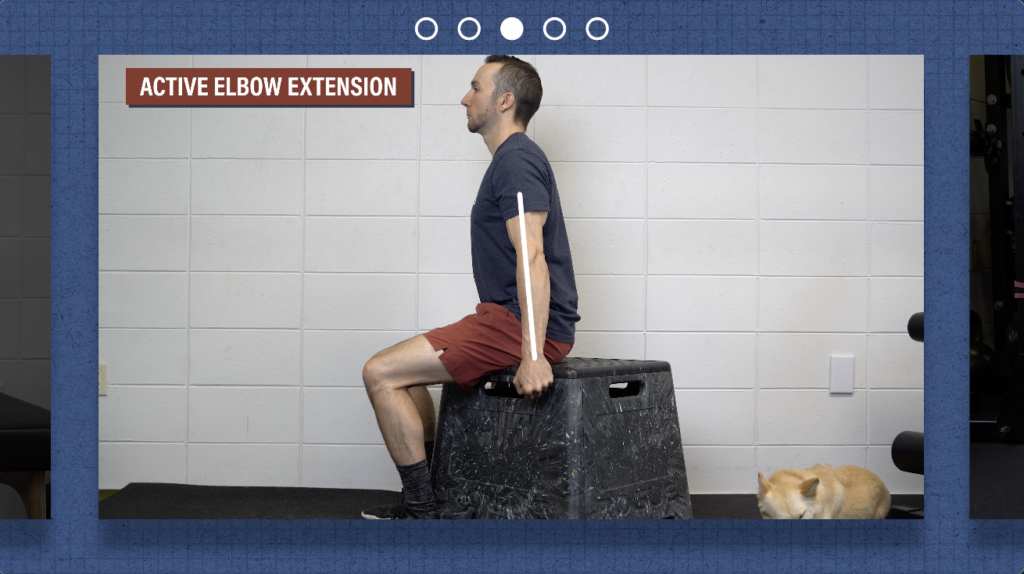
Band Assisted Elbow Extension – Anchor a band to an object, and while on your hands and knees, place the band just above your elbow. Then, rotate your arm inward until your elbow crease points straight ahead. Move your elbow from a bent position to as straight as possible. Start with a lighter band, and increase the resistance over time, if you need. Perform for 2-3 sets of 10-15 repetitions, every day.
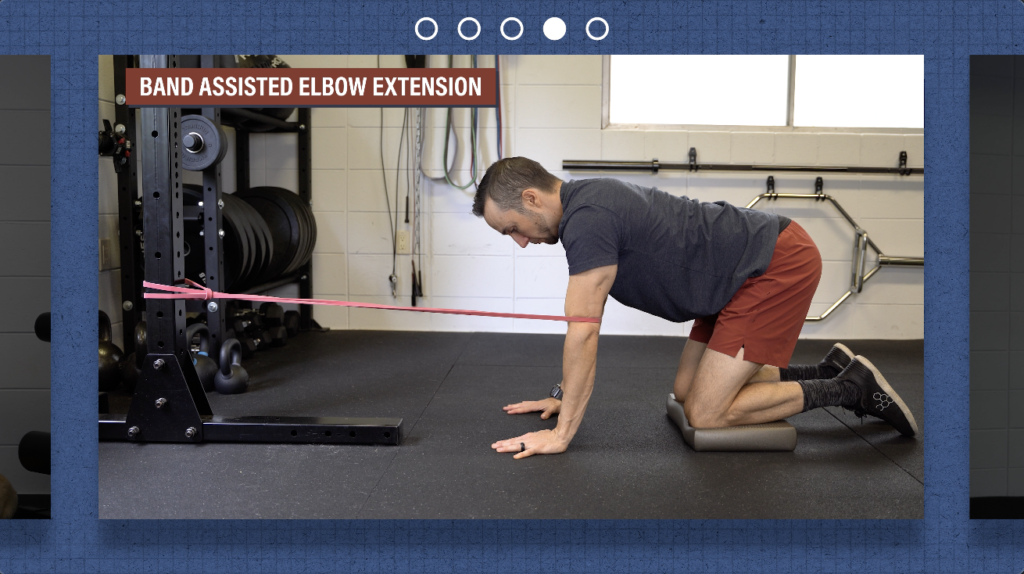
Bicep Curl with Eccentric Emphasis – Support your upper arm on a preacher bench, the arm of a couch, or a barbell with a pad in a squat rack as shown here. Slowly lower a weight for 3-4 seconds, trying to straighten the arm as far as possible. Pause at the bottom for 2-3 seconds and repeat. You can use the opposite arm to help lift the arm back to the start, if needed. Perform for 2-4 sets of 6-10 reps, every other day.
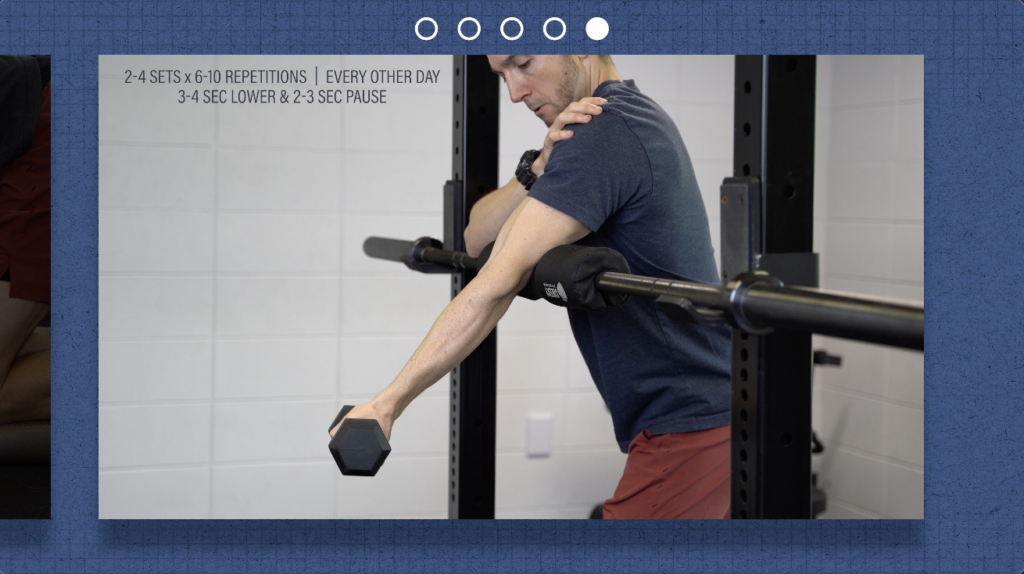
Flexion Exercises
Passive Elbow Flexion – Use your other hand to bend your elbow into as much flexion as tolerated. The goal is to keep your involved side as relaxed as possible and let your other arm do all the work. During each repetition, hold the end position for 2-3 seconds. Perform for 15-20 repetitions, 2-3x/day, every day.
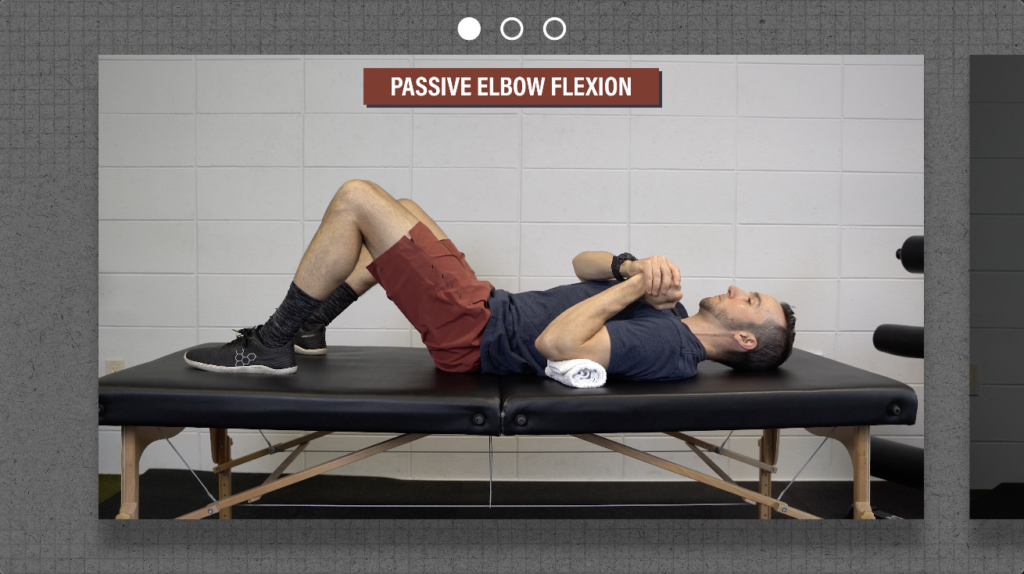
Active Elbow Flexion – Actively move your elbow through your full range of motion, placing an emphasis on trying to bend the arm as far as you can. Perform for 15-20 repetitions, 2-3x/day, every day.
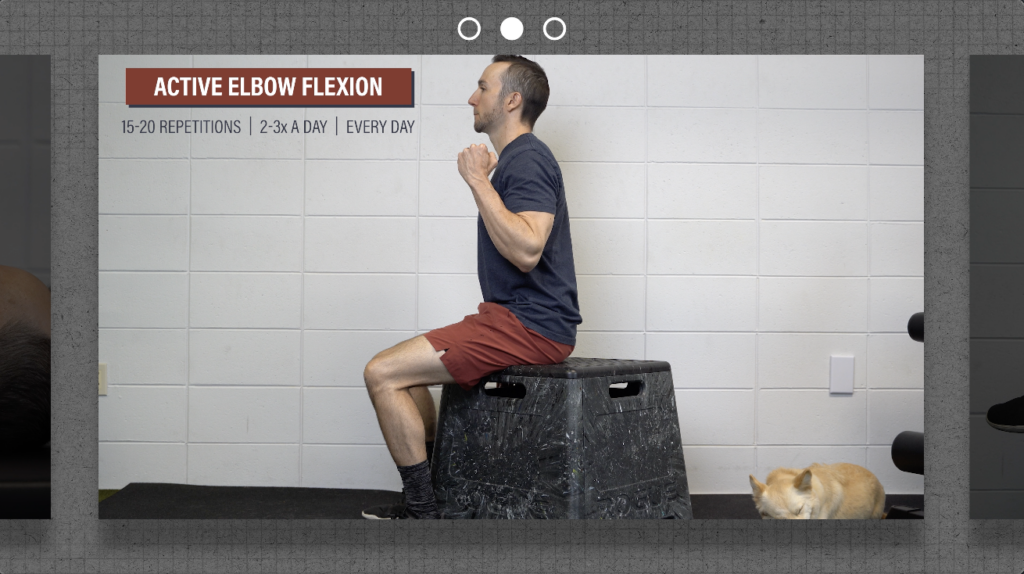
Single Arm Skull Crusher – Lie on your back with your arm pointing straight up toward the ceiling. Keeping your shoulder at 90° of flexion, slowly bend your elbow as far as comfortable, pause at the bottom for 2-3 seconds, then straighten your arm back to the starting position. Perform for 2-4 sets of 6-10 repetitions, every other day, using a slow tempo: 3-4 second lower and 2-3 second pause at the bottom.
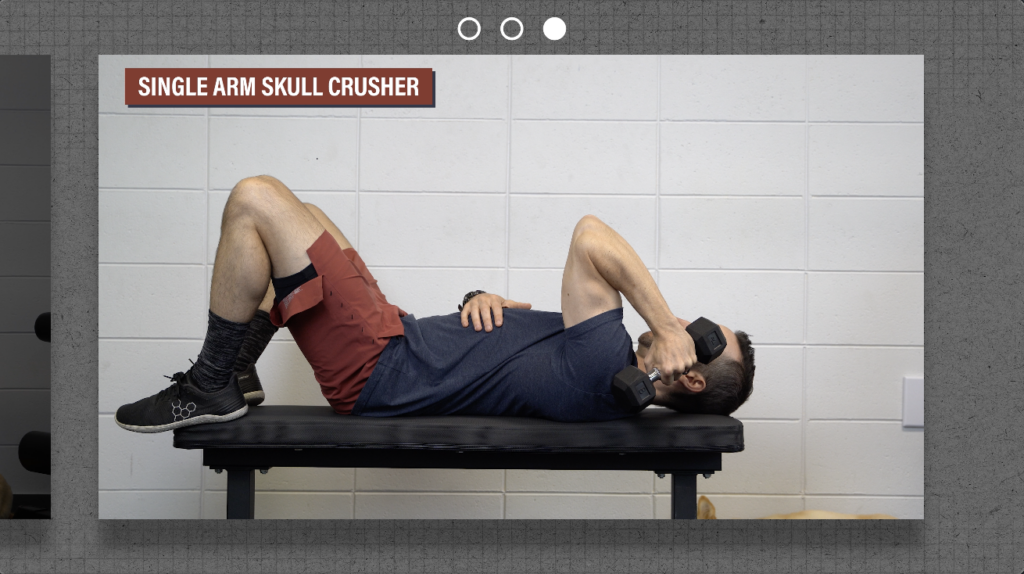
Additional Exercises
As you gain more strength and control, you should consider other strengthening exercises such as standing single arm tricep extensions with a cable or band and standing bicep curls. Focus on moving through your full elbow range of motion under control. Perform for 2-4 sets of 8-15 repetitions, 2-3x/week.
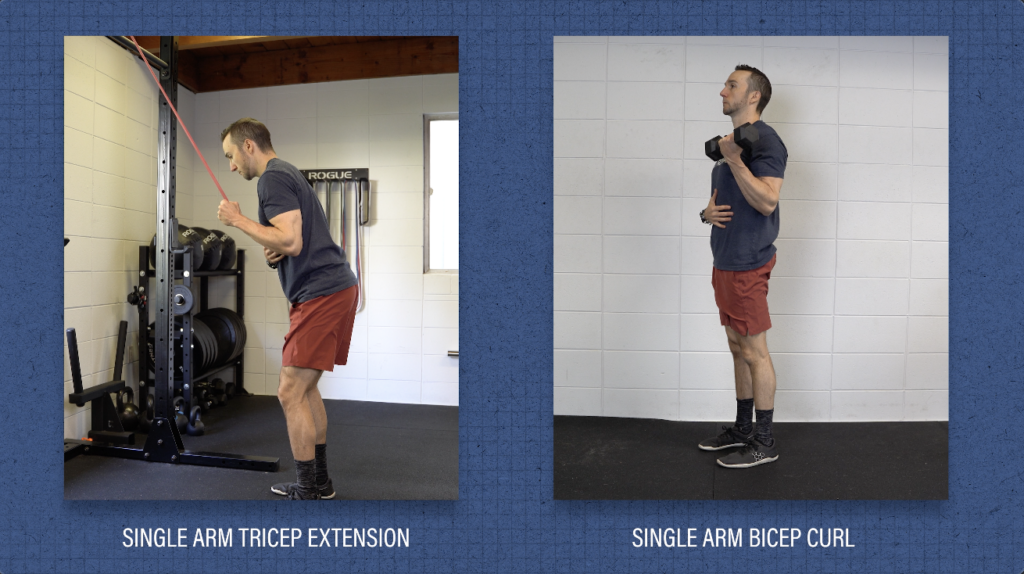
Supination and Pronation Exercises
Active Supination and Pronation – With elbow at your side and bent to 90°, rotate your palm up, then slowly turn your palm facing down as far as tolerated. Perform for 15-20 repetitions each, 2-3x/day, every day.
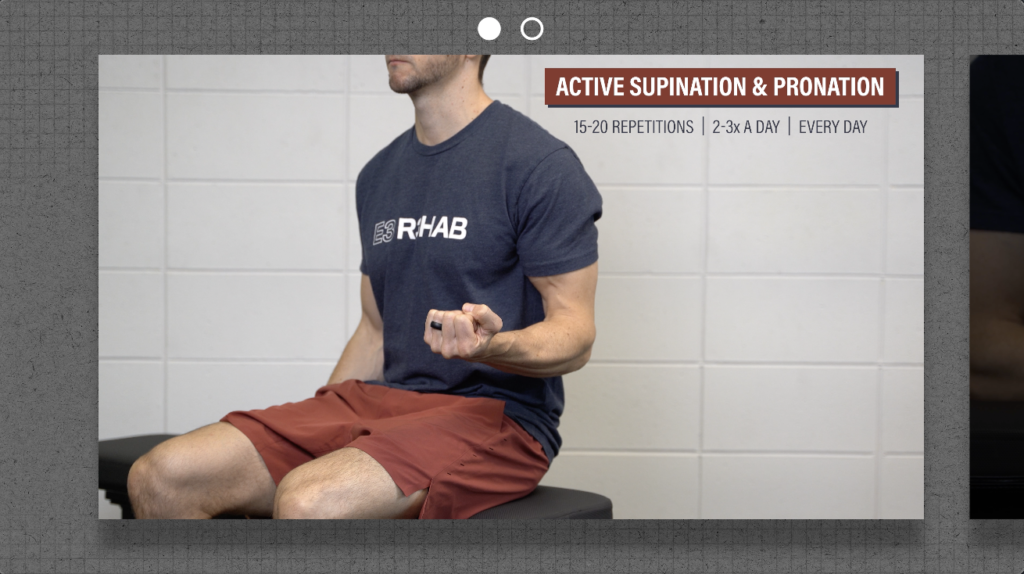
Weighted Supination and Pronation – Hold a stick, hammer, or the bottom of a dumbbell and slowly rotate your forearm in one direction and then slowly rotate in the other. Pause at your end range for 2-3 seconds during each repetition. Perform for 2-4 sets of 6-10 repetitions each, every other day.
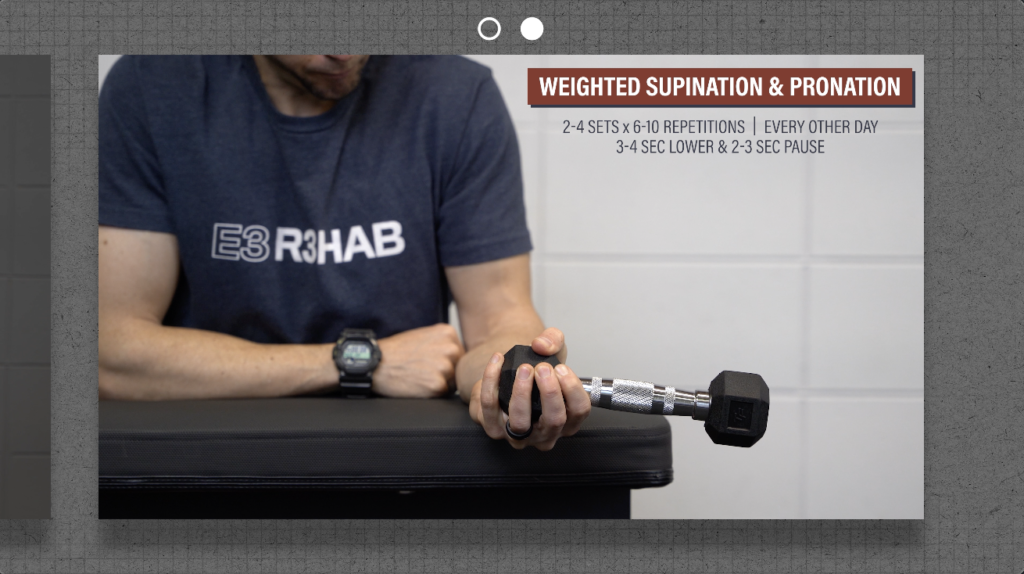
Recommendations
When performing these exercises, I have 3 recommendations:
- You do not need to do all the exercises in each category. You can choose one for each movement or simply focus on the one range of motion you want to improve.
- Keep symptoms tolerable during exercise. Some discomfort is okay, but they should not be unbearable.
- These should not lead to an increase in symptoms the next day. If they do, back off the volume and/or intensity of the exercises. You can even regress to an easier option if you need.
Disclaimer
It is important to understand that these exercises are just some options to consider. They can help with a wide variety of elbow issues that present along a variable timeframe. Exercise selection and timelines will differ based on your injury, surgery, symptoms, goals, etc.
For example, I would expect rehab for a biceps repair to progress through the exercises over the course of a couple months, and ultimately, you should achieve full elbow range of motion. However, recovery from surgery of a fractured or dislocated elbow may take slightly longer and achieving full elbow range of motion may not be realistic or necessary.
Summary
Following an injury or surgery, your goal should be to restore full elbow range of motion, or very close to it. However, unlike other joints, a loss of end ranges may only result in minimal functional impairment with daily tasks.
Exercises for improving elbow range of motion should focus on improving extension, flexion, supination, and pronation. When you can perform a certain exercise and your timeline for progression will vary based on the surgery performed, precautions, tissue healing time, goals, etc.
Regardless of the case, in order to maximize results, perform the exercises often, keep pain tolerable during, and minimize excessive soreness the next day.
Once again, before starting these exercises, it is recommended you first get clearance from your surgeon, medical doctor, or healthcare provider.
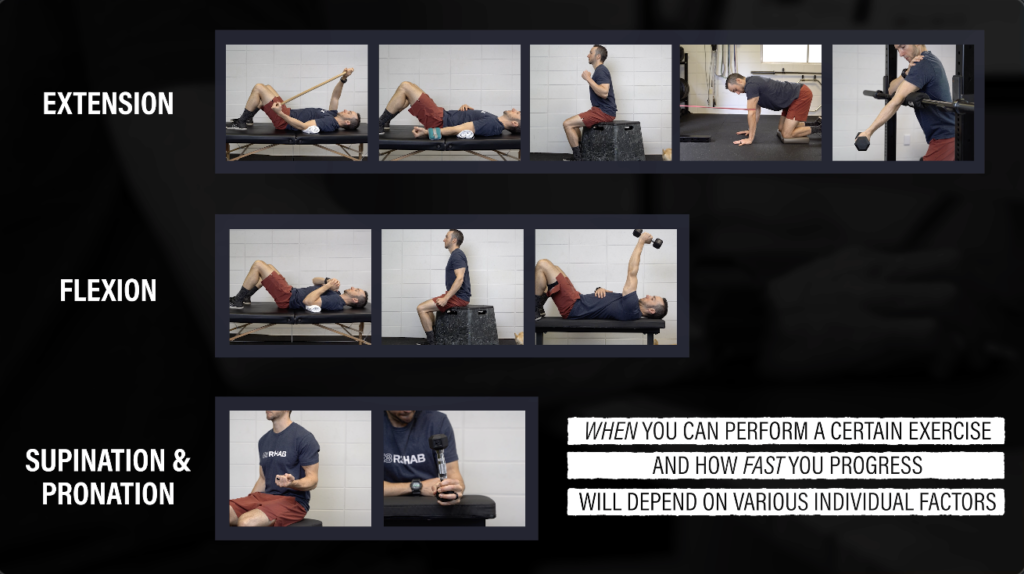
Looking for rehab or performance programs? Check out our store here!
Want to learn more? Check out some of our other similar blogs:
Thanks for reading. Check out the video and please leave any questions or comments below.


